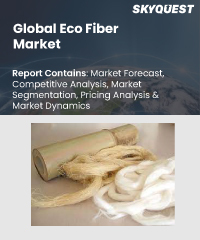
Report ID: SQMIG15A2193

Report ID:
SQMIG15A2193 |
Region:
Global |
Published Date: February, 2024
Pages:
157
|
Tables:
89 |
Figures:
76
Global Eco Fiber Market size was valued at USD 51.6 billion in 2022 and is poised to grow from USD 56.04 billion in 2023 to USD 108.42 billion by 2031, growing at a CAGR of 8.60% during the forecast period (2024-2031).
The global eco fibre market has been experiencing significant growth in recent years, driven by the increasing demand for sustainable and environmentally friendly textile materials. With increasing concerns about climate change and environmental degradation, consumers are seeking textile materials that have a minimal ecological footprint. Eco fibers fulfil this demand by minimising the use of harmful chemicals, reducing water consumption, and supporting ethical labour practices throughout the supply chain. As a result, eco fibers are being widely adopted by various end-use industries, including apparel, home textiles, and automotive, among others. The apparel industry represents a major application segment for eco fibers. Consumers are increasingly inclined towards eco-friendly clothing options that are produced using organic and sustainable fibers. The fashion industry, in particular, is witnessing a shift towards sustainable practices, driven by conscious consumers and regulatory initiatives promoting environmentally responsible manufacturing processes. As a result, many fashion brands and retailers are incorporating eco fibers into their product lines, further fueling the growth of the global eco fiber market. In addition to the apparel sector, the home textiles segment is also experiencing substantial growth in the adoption of eco fibers. Consumers are seeking sustainable and non-toxic alternatives for bedding, towels, upholstery, and other home textile products. Eco fibers offer improved breathability, durability, and comfort, making them a preferred choice for eco-conscious consumers in the home textile market.
Our industry expert will work with you to provide you with customized data in a short amount of time.
REQUEST FREE CUSTOMIZATIONWant to customize this report? This report can be personalized according to your needs. Our analysts and industry experts will work directly with you to understand your requirements and provide you with customized data in a short amount of time. We offer $1000 worth of FREE customization at the time of purchase.

Report ID: SQMIG15A2193